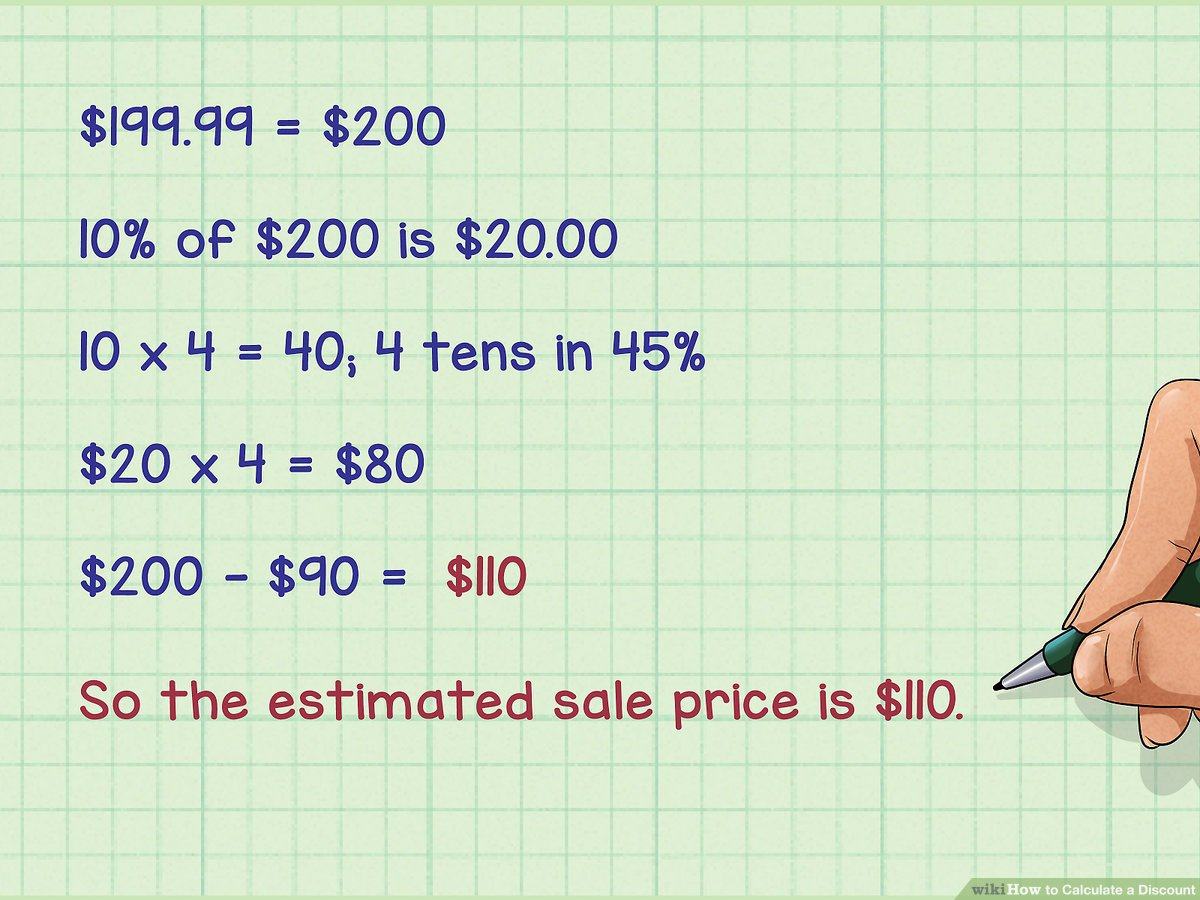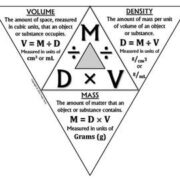Whether snagging a bargain at your favorite clothing store or cashing in on a flashy tech sale, understanding how to calculate the discount percentage is a handy life skill. It’s all about knowing how much money you save on your purchases and feeling good about your savvy shopping. This guide will arm you with the knowledge to work out those savings, ensuring you never miss out on a great deal.

Understanding the Math Behind Discounts
Discounts are everywhere—from the clearance rack at the mall to online holiday sales—and knowing how to calculate the percentage off can give you the edge in managing your finances. Here, we’ll go over the basics: what a discount is and how it affects the price tag.
Detailed Steps
-
Identify the original price of the item. This is the amount the item costs before any discounts are applied.
-
Take note of the discount percentage. This is typically advertised as a certain percentage off, like 20% off.
-
To calculate the discount amount, convert the percentage into a decimal by dividing it by 100; for example, 20% becomes 0.20.
-
Multiply the original price by the decimal to find out the discount amount.
-
To find the sale price, subtract the discount amount from the original price.
Summary
Using this method, you’ll quickly be able to figure out how much you’re saving during sales. However, this doesn’t take into account additional savings from coupons or store-specific rewards, which could further decrease your total.
Price Tag Savvy
Understanding how individual items are discounted gives you the ability to estimate the total savings on multiple items, even when they have different original prices or discount percentages.
Detailed Steps
-
Calculate the discount for each item separately using the basic formula discussed above.
-
Sum up the individual discount amounts to get the total savings.
-
Optionally, sum up the sale prices of each item to know what you will actually be spending in total.
Summary
This approach requires a bit more time and math for multiple items but offers a clear picture of total savings. Be mindful of potential human error in calculations.
Strategic Bulk Buying
Sometimes stores offer additional percentage discounts when you buy more items. Here’s how you can calculate your savings in such scenarios.
Detailed Steps
-
Find out the original price and discount percentage for the bulk offer.
-
Follow the standard formula to calculate the discount on a single item.
-
Multiply the discount amount by the number of items you intend to buy.
-
Subtract the total discount from the collective original price of the items.
Summary
This method emphasizes the benefits of bulk buying, particularly on your wallet, although it might lead to purchasing more than you need.
Advanced Discount Calculation
Some shopping situations, such as Black Friday sales, involve complex, layered discounts. Learning this calculation can be a game-changer.
Detailed Steps
-
Apply the first discount to the original price to find the interim sale price.
-
Apply subsequent discounts to the most recent sale price.
-
Repeat until all discounts have been applied.
Summary
Mastering this strategy can yield significant savings, but it requires careful, step-by-step computation to avoid confusion and mistakes.
Time-limited Discount Deliberations
With time-sensitive discounts, you often need to make quick decisions. Here’s a fast way to estimate savings.
Detailed Steps
-
Round the original price to a number that is easy to work with.
-
Use an estimated discount percent to quickly calculate a rough savings amount.
-
Decide whether the ballpark figure is worth the purchase.
Summary
This method offers a swift estimation which aids in rapid decision-making, although not as exact as full calculations.
Using Technology Assistants
Smartphones and calculators are fantastic tools to check your work or do the heavy lifting for you.
Detailed Steps
-
Enter the original price into the calculator.
-
Multiply by the discount percentage as a decimal.
-
Subtract the result from the original price for the final amount.
Summary
This solution leverages technology for accuracy and speed, removing chances for human error, assuming the correct digits are entered.
Staying Vigilant on VAT
When VAT (Value-Added Tax) is included in the price, calculating discounts becomes trickier.
Detailed Steps
-
Determine if the listed price includes VAT.
-
Calculate the discount on the price before VAT.
-
Add the VAT back to the discounted price, if necessary.
Summary
This calculation will ensure that you are not misled by the tax-inclusive prices, though it requires awareness of tax rates and potential complexities.
Shopping Seasons Strategy
Take advantage of seasonal sales by familiarizing yourself with common discount patterns and their computations.
Detailed Steps
-
Research typical seasonal discount rates.
-
Use historical rates to estimate potential savings on upcoming sales.
-
Apply the general discount percentage formula to expected full prices.
Summary
This approach helps you to budget for seasonal expenses, but predictions aren’t always accurate as they rely on past trends.
Rewards Programs Rundown
Many stores offer rewards programs that further reduce prices. Here’s how to consider these.
Detailed Steps
-
Understand the rewards program and how it impacts pricing.
-
Assign a monetary value to points or rewards earned.
-
Factor this into your overall discount calculation as an additional step following your initial discount computation.
Summary
Incorporating loyalty rewards may result in greater savings, though it depends on the intricacies of individual programs and may require membership commitment.
Consumer Psychology Consideration
When calculating discounts, remember that not all ‘savings’ are beneficial. This final tip can keep you grounded.
Detailed Steps
-
Calculate the actual savings using the previously discussed methods.
-
Assess if the purchase is necessary or if you’re being enticed by the illusion of a deal.
-
Consider the long-term value of the item versus the initial discount.
Summary
While this isn’t a numerical solution, it’s a valuable step to ensure you’re truly saving money in a meaningful way and not just succumbing to marketing tactics.
In Conclusion
Calculating discount percentages is pivotal for informed shopping decisions. With the guidance provided on various methods and considerations, you’re equipped to maximize your savings.
Frequently Asked Questions
Q: Can I calculate a discount for an item with an additional percentage off the sale price?
A: Yes, for multiple discounts, you apply each discount consecutively to the sale price after the previous discount has been applied.
Q: How do I factor in a buy-one-get-one-free offer in my calculations?
A: For such offers, calculate the discount as the price of one item spread over two, effectively amounting to a 50% discount on each.
Q: Is it possible to calculate the discount percentage if I only know the original and sale price?
A: Yes, subtract the sale price from the original price, divide that amount by the original price, and multiply by 100 to get the discount percentage.








